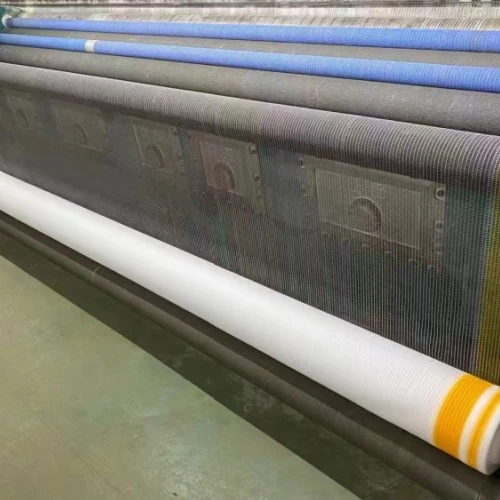-
 Afrikaans
Afrikaans -
 Albanian
Albanian -
 Amharic
Amharic -
 Arabic
Arabic -
 Armenian
Armenian -
 Azerbaijani
Azerbaijani -
 Basque
Basque -
 Belarusian
Belarusian -
 Bengali
Bengali -
 Bosnian
Bosnian -
 Bulgarian
Bulgarian -
 Catalan
Catalan -
 Cebuano
Cebuano -
 China
China -
 Corsican
Corsican -
 Croatian
Croatian -
 Czech
Czech -
 Danish
Danish -
 Dutch
Dutch -
 English
English -
 Esperanto
Esperanto -
 Estonian
Estonian -
 Finnish
Finnish -
 French
French -
 Frisian
Frisian -
 Galician
Galician -
 Georgian
Georgian -
 German
German -
 Greek
Greek -
 Gujarati
Gujarati -
 Haitian Creole
Haitian Creole -
 hausa
hausa -
 hawaiian
hawaiian -
 Hebrew
Hebrew -
 Hindi
Hindi -
 Miao
Miao -
 Hungarian
Hungarian -
 Icelandic
Icelandic -
 igbo
igbo -
 Indonesian
Indonesian -
 irish
irish -
 Italian
Italian -
 Japanese
Japanese -
 Javanese
Javanese -
 Kannada
Kannada -
 kazakh
kazakh -
 Khmer
Khmer -
 Rwandese
Rwandese -
 Korean
Korean -
 Kurdish
Kurdish -
 Kyrgyz
Kyrgyz -
 Lao
Lao -
 Latin
Latin -
 Latvian
Latvian -
 Lithuanian
Lithuanian -
 Luxembourgish
Luxembourgish -
 Macedonian
Macedonian -
 Malgashi
Malgashi -
 Malay
Malay -
 Malayalam
Malayalam -
 Maltese
Maltese -
 Maori
Maori -
 Marathi
Marathi -
 Mongolian
Mongolian -
 Myanmar
Myanmar -
 Nepali
Nepali -
 Norwegian
Norwegian -
 Norwegian
Norwegian -
 Occitan
Occitan -
 Pashto
Pashto -
 Persian
Persian -
 Polish
Polish -
 Portuguese
Portuguese -
 Punjabi
Punjabi -
 Romanian
Romanian -
 Russian
Russian -
 Samoan
Samoan -
 Scottish Gaelic
Scottish Gaelic -
 Serbian
Serbian -
 Sesotho
Sesotho -
 Shona
Shona -
 Sindhi
Sindhi -
 Sinhala
Sinhala -
 Slovak
Slovak -
 Slovenian
Slovenian -
 Somali
Somali -
 Spanish
Spanish -
 Sundanese
Sundanese -
 Swahili
Swahili -
 Swedish
Swedish -
 Tagalog
Tagalog -
 Tajik
Tajik -
 Tamil
Tamil -
 Tatar
Tatar -
 Telugu
Telugu -
 Thai
Thai -
 Turkish
Turkish -
 Turkmen
Turkmen -
 Ukrainian
Ukrainian -
 Urdu
Urdu -
 Uighur
Uighur -
 Uzbek
Uzbek -
 Vietnamese
Vietnamese -
 Welsh
Welsh -
 Bantu
Bantu -
 Yiddish
Yiddish -
 Yoruba
Yoruba -
 Zulu
Zulu
Using Bird Nets for Effective Bird Capture Techniques and Strategies
Using Bird Nets to Catch Birds An Insight into Techniques and Conservation
Birds have fascinated humanity for centuries, showcasing a remarkable variety of species, colors, and behaviors. However, catching birds, whether for study, conservation, or rehabilitation, requires skill, knowledge, and the right tools. One of the most effective methods employed by ornithologists and bird enthusiasts alike is the use of bird nets. This article explores the implications, techniques, and considerations involved in using bird nets to catch birds responsibly.
Bird nets come in various shapes and sizes, but the most commonly used are mist nets. These fine, almost invisible nets are designed to entangle birds without causing them injury. Mist nets can be stretched across known migration paths or feeding areas, allowing researchers to capture birds for study. The nets are usually made from lightweight, durable materials that prevent excess stress on the birds while ensuring effective capture.
Using Bird Nets to Catch Birds An Insight into Techniques and Conservation
Another important reason for catching birds is rehabilitation. Birds in distress—whether due to injury, illness, or environmental hazards—often need to be captured and treated. Bird nets play a crucial role in these scenarios, allowing wildlife rehabilitators to safely catch and transport injured birds to facilities where they can receive care. The use of nets in such cases highlights the balance between human intervention and animal welfare, emphasizing the importance of a gentle approach to capture.
bird net to catch birds

However, the use of bird nets must be approached with care and responsibility. Improper use can lead to significant harm or stress for captured birds. Therefore, best practices must be adhered to. Researchers and bird catchers should always monitor their nets, ensuring that captured birds are retrieved promptly to minimize stress. Additionally, it is crucial to identify the species being caught, as some birds may be protected under local or international laws. Catching protected species without the necessary permits can result in legal consequences and contribute to the decline of vulnerable populations.
Training and experience are essential for anyone involved in catching birds with nets. Educating oneself on the local avifauna, as well as the ethical implications of bird capture, is critical. This knowledge helps to ensure that the practice contributes positively to conservation efforts rather than harming wildlife populations.
Moreover, alternatives to traditional bird nets are being explored. Technologies such as audio lures and camera traps can be employed to monitor bird populations and behavior without the need for physical capture. These methods can provide valuable data while reducing the stress involved for the birds.
In conclusion, while bird nets are a valuable tool in the study and conservation of avian species, their use should be guided by ethics and responsibility. Whether for research or rehabilitation, capturing birds must be done with care, ensuring minimal stress and maximum benefit for our feathered friends. As we continue to learn about the complexities of bird life and their roles in our ecosystems, it is imperative that we protect these remarkable creatures with the utmost respect and diligence. Through responsible practices, we can continue to enjoy the beauty of birds while contributing to their conservation for future generations to admire.
-
Why Construction Steel Mesh is the Backbone of Modern InfrastructureNewsJun.27,2025
-
The Ultimate Solution for Versatile Industrial and Consumer ApplicationsNewsJun.27,2025
-
Smart Breeding Starts Here: The Ideal Breeder Net for GuppiesNewsJun.27,2025
-
Maximize Your Harvest with Smart NetNewsJun.27,2025
-
High-Performance Steel Mesh Solutions for Modern IndustryNewsJun.27,2025
-
Durable Solutions for Modern Agriculture and LandscapingNewsJun.27,2025











